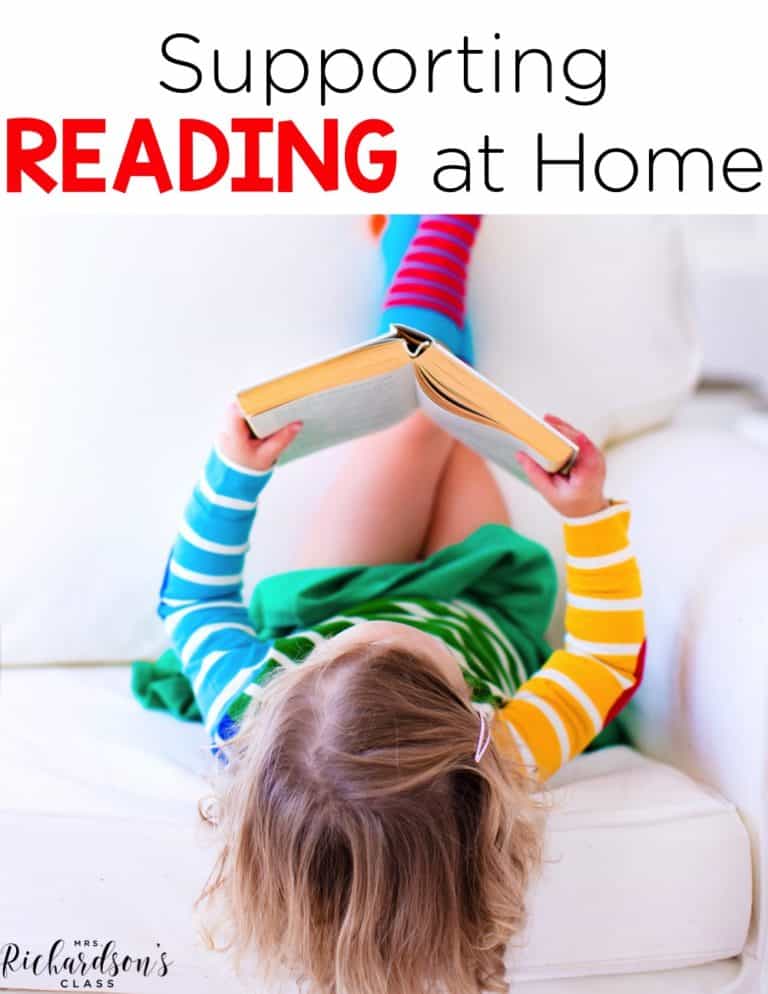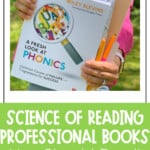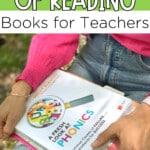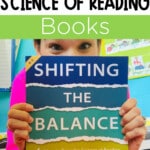

Check out these four science of reading books to add to your list of professional reading so you can start making changes towards better reading instruction practices.
Over the last few years, we have learned more and more about how kids learn to read. Because of this, we know change is needed in how we teach kids how to read. For example, we know that kids do need explicit phonics instruction and opportunities to practice their phonics skills. We’ve learned that there are better ways to prompt our readers. We have also learned the importance and value of using decodable readers.
If you are ready to rethink your reading instruction from whole group to small group, I am with you! Are you looking for some good science of reading books for some summer professional development to read to broaden your knowledge or understanding of the science of reading? I have a list of some great science of reading books that I have dug into. I think you’ll enjoy them, too. I’d love to know what you thought or learned after reading them!
**Amazon affiliate links are used below at no cost to you. These links help support and run this website.
This book is a great book to start with if you are still new to the Science of Reading and have a balanced literacy background. I read it super fast because it was that easy to digest. The authors look at the current research and propose some shifts that could be made to more effectively teach students how to read.
If you are coming from a strong balanced literacy background, I would recommend this as the first book to read because it acknowledges where you are and where you should be going. My favorite part is that it does so with a big dose of grace! This book is easy to understand, has classroom examples in it, and proposes some thought-provoking questions.
This book is all about differentiating your small groups! Instead of making your reading groups solely by your student’s levels, this book advocates for grouping students by their needs. Do some students have deficits in phonemic awareness? Are other students in your class struggling with fluency or comprehension?
Students who struggle with a certain area of reading could be in a small group and work on that skill with you. This book has example lessons in it, lots of activities, and other tools to help plan your reading groups.
This book looks at the five stages of reading- emergent, beginning, fledgling, transitional, and independent. There are lesson plans, assessments, and a scope and sequence for teaching word study for each stage of reading. This is a good one to look at!
In this book, author Wiley Blevins examines the seven ingredients for successful phonics instruction. The seven ingredients are a framework for how to teach students phonics effectively. He also discusses common pitfalls in teaching phonics, which I could definitely relate to as I reflected back on my time in the classroom.
This book has lesson ideas, tips, and word lists. It’s an easy read that is practical and helpful! If you ever get the chance to hear him in person, I highly recommend it! He is a wealth of knowledge and breaks things down so that they are easy to understand.
If you aren’t sure where to begin, just pick one of these science of reading books and get started! That’s the best thing you can do for both you and your little readers. Start with just one thing. Change one small thing and then keep going! When you are ready, change another thing. We are lifelong learners and will always be growing. Give yourself grace, friends.
Have you read any other great books that helped grow your understanding of the science of reading? I’d love to hear some of your recommendations in the comments!

Want to use the latest research to boost your readers during small groups? This FREE guide is packed with engaging ideas to help them grow!

I’m a K-1 teacher who is passionate about making lessons your students love and that are easy to implement for teachers. Helping teachers like you navigate their way through their literacy block brings me great joy. I am a lifelong learner who loves staying on top of current literacy learning and practices. Here, you’ll find the tools you need to move your K-2 students forward!


| Cookie | Duration | Description |
|---|---|---|
| cookielawinfo-checkbox-analytics | 11 months | This cookie is set by GDPR Cookie Consent plugin. The cookie is used to store the user consent for the cookies in the category "Analytics". |
| cookielawinfo-checkbox-functional | 11 months | The cookie is set by GDPR cookie consent to record the user consent for the cookies in the category "Functional". |
| cookielawinfo-checkbox-necessary | 11 months | This cookie is set by GDPR Cookie Consent plugin. The cookies is used to store the user consent for the cookies in the category "Necessary". |
| cookielawinfo-checkbox-others | 11 months | This cookie is set by GDPR Cookie Consent plugin. The cookie is used to store the user consent for the cookies in the category "Other. |
| cookielawinfo-checkbox-performance | 11 months | This cookie is set by GDPR Cookie Consent plugin. The cookie is used to store the user consent for the cookies in the category "Performance". |
| viewed_cookie_policy | 11 months | The cookie is set by the GDPR Cookie Consent plugin and is used to store whether or not user has consented to the use of cookies. It does not store any personal data. |


